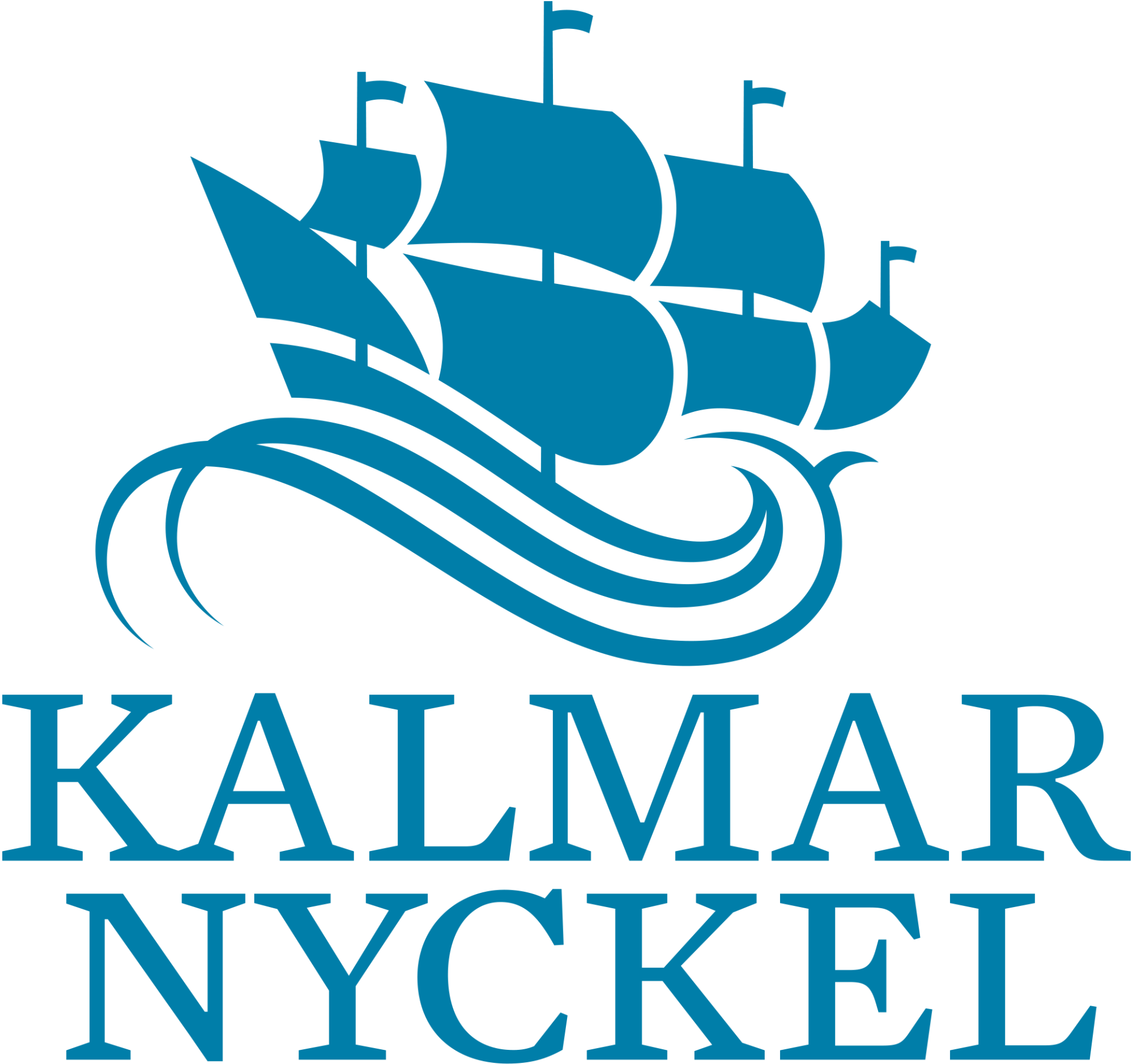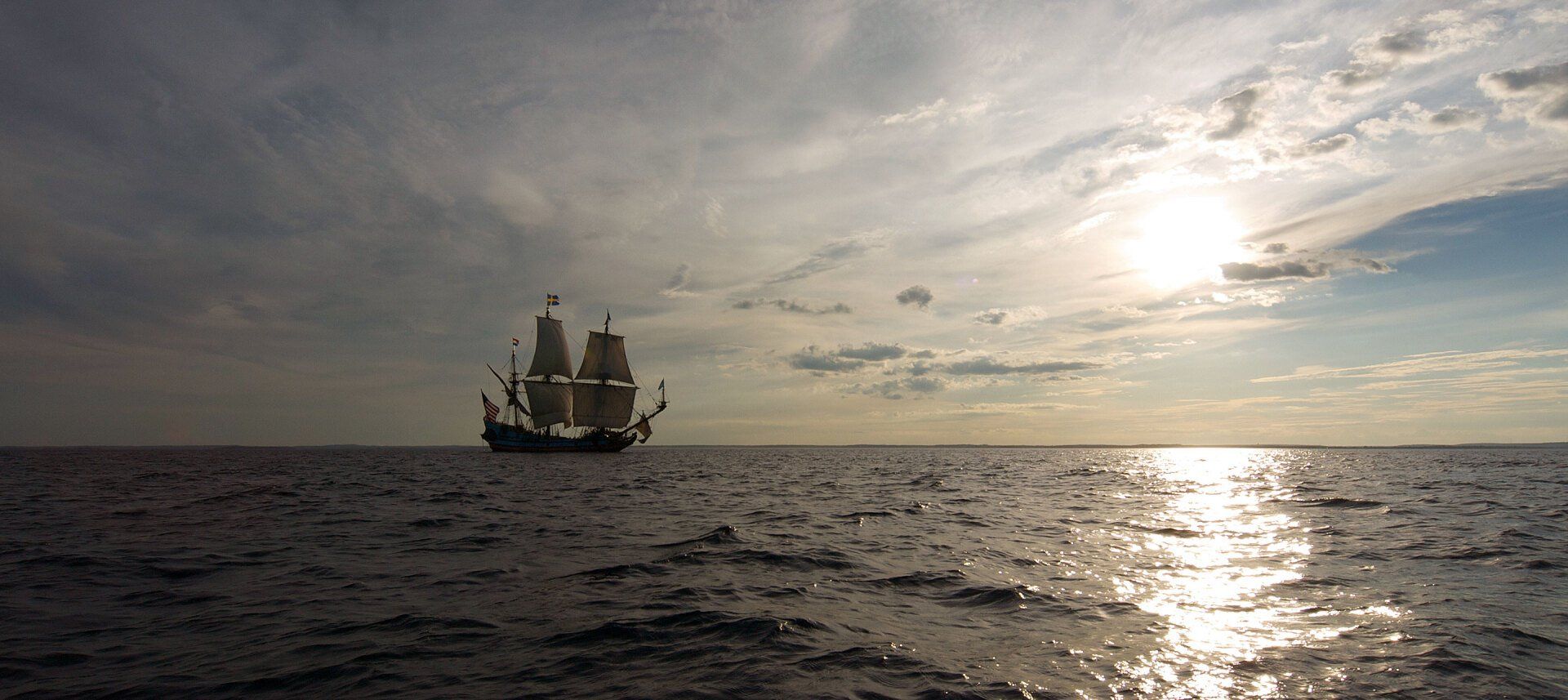History of the Original
Kalmar Nyckel
The original Kalmar Nyckel was one of America’s pioneering colonial ships. Known as the Swedish Mayflower of the Delaware Valley, she brought the settlers who founded the colony of New Sweden in 1638 and established Fort Christina, the first permanent European settlement in the Delaware Valley.
Construction & Swedish Service
The original Kalmar Nyckel was one of the great ships of the American colonial era. Built in Amsterdam in 1627, Kalmar Nyckel was an ordinary Dutch Pinnace (Pinas) of about 300 tons and 100 feet on deck, just one of a couple thousand similar small warships and gun-armed merchantmen built by the Dutch in this period.
In 1629, she was purchased by the Swedish Skeppskompaniet (Ship Company) with tax revenue from the strategic harbor town of Kalmar, on Sweden’s southeast coast, and renamed Kalmar Nyckel (“Key of Kalmar”).
When not sailing on colonial voyages for the New Sweden Company, she served the Swedish Navy as an auxiliary warship until 1651. She was part of Gustav II Adolf’s famous invasion fleet at Peenemünde on the German coast of Pomerania in 1630, which marked Sweden’s entry into the Thirty Years’ War (1618-48).
Swedish Admiralty records from 1634 list her as carrying a crew of 55 men and 12 six-pounder cannon – probably typical of her wartime strength. Toward the end of her career, she saw bloody action in Torstenson’s War against the Danes in 1645 and transported Swedish diplomats across the Baltic during the negotiations that led to the Peace of Westphalia in 1648.
Colonial Ship
Kalmar Nyckel is best remembered today as a colonial ship for the New Sweden Company. She launched the colony of New Sweden in 1638 as Governor Peter Minuit’s flagship, bringing the colonists who established the first permanent European settlement in the Delaware Valley – little Fort Christina, which would grow to become the city of Wilmington, Delaware.
An exceptional ship with an extraordinary record of endurance, Kalmar Nyckel would make eight successful crossings of the Atlantic (four roundtrips between Gothenburg and Fort Christina from 1637 to 1644) more than any documented colonial ship of the era.
Final Voyage As Dutch Warship
Kalmar Nyckel was decommissioned from the Swedish Navy on June 19, 1651, by order of Queen Christina herself, and sold to a Dutch merchant living in Stockholm, Cornelis Roelofsen. An inspection by the Swedish Admiralty had determined that her aging condition would make her unsuitable for a fifth voyage across the Atlantic for the New Sweden Company.
Her new owner, Roelofsen had Kalmar Nyckel – now called by her Dutch name, Kalmar Sleutel (“Sleutel” is Dutch for “Nyckel,” which both mean “Key” in English) refitted and up-gunned to 24 six-pounder cannons. She was anchored in Amsterdam harbor by April 22, 1652, just in time to be leased as a naval escort by the Dutch Navies, which were looking to acquire 150 warships in preparation for a looming war against the English.
Kalmar Sleutel
(Nyckel) soon joined 15 ships of the escort squadron that was guarding the Dutch herring fleet in the North Sea
off the east coast of Scotland. On July 22, 1652, she would be sunk in the bloody Battle of Buchan Ness, gallantly defending the fishing fleet against a fleet of 66 English ships in the first engagement of what would be called the First Anglo-Dutch War (1652-1654).

